Senza Sord
SPRING 2023



SPRING 2023


Cover: TSO 75th Anniversary Gala Concert
Hi everyone
Unbelievably, we are a year on from the last issue of Senza Sord but I hope that the news from our colleagues across the country is heartening. There are so many creative activities and events being imagined and developed and many positions being auditioned and filled. This doesn’t diminish the ongoing dismay that the players made redundant in OAO are now watching their jobs be reauditioned. As Sydney tells, many are deeply conflicted by the fact that the essential filling of positions is tainted by the memory of those who were let go.
In 2018, a new union for working musicians, Musicians Australia (MA), was formed under the umbrella of the MEAA. Currently, the total membership of MA, SOMA and TOMA (Theatre Orchestra Musicians Association) sits at 1655 musicians, which is the great outcome of encouraging musicians across the industry to become members of the union.
In 2023, a cross-sectional cohort of 14 musicians from these three groups was established: the Musicians’ Section Committee. SOMA has four representatives on this committee – Lachlan Bramble, Peter Jenkin, Liam O’Malley and myself – and our collegiate focus is on improving advocacy and conditions across the industries.
With more of us gathering to discuss campaign aims and strategies, lobbying governments and developing common motives with which to approach and improve
relationships and networks, through the Alliance, we‘ll be more effective in achieving better outcomes for all of us.
You may remember that in the May 2021 web version of Senza Sord, there was included a document Let’s Get Creative: a case put together by MEAA that articulated the need for a comprehensive arts and cultural policy and how it might be achieved.
In January 2023, the Federal Government presented a five-year National Cultural Policy – Revive, from which Creative Australia was formed, which was described as a body that would “restore and modernise the Australia Council for the Arts”.
In August 2023, within this body, the Creative Workplaces Council was inaugurated as an initiative with aims to support arts workers and arts organisations. Cheerfully, on this Council is Ruth Hazelton, who is one of our representatives in the Musicians Section Committee in MEAA.
So despite this being rather a mind-full mouthful, I am optimistic that the arts and ourselves as artists are improving and increasing our reach into the minds of the politicians.
In this issue, Paul Davies expands on the research that was carried out into our sector and the findings, done as part of the Let’s Get Creative strategy, to develop evidence-based policy drawn from the results of enquiry into public interest. As an ongoing aspect
of this development, I shall aim to keep you across the Musicians Section agendas and successes as we go forward.
I’d also like to welcome Lachlan Bramble (ASO) to the role of SOMA President and convey our enormous gratitude to our previous President, Anthony Pope, for all his hard work in the position. Mitch Nissen (TSO) is now SOMA National Vice-President and Sydney Braunfeld (OAO) has stepped into the position of SOMA Secretary.
Finally, I’d like to express my deepest thanks to Pete Jenkin and the SOMA team for the nomination and award of a Gold Honour Badge, which I very delightedly accepted in February of this year. I feel immensely honoured to now be part of an incredible group of people across MEAA that have been dedicated to making our professions and professional lives better.
All the best to everyone Tania
The International Federation of Musicians (FIM) is a global union federation bringing together trade unions representing music performers from over 70 countries. MEAA is an affiliated Union and for many years now I have been a member of the Executive Committee representing MEAA. FIM’s operations are funded from affiliation fees paid by member unions along with sponsorship from collecting agencies mostly in Europe.
FIM is active globally campaigning and lobbying for protections in international trade agreements – particularly for performers rights, along with security of funding for orchestras, operas and ballets. We have also had some success recently regarding listing of Pernambuco wood and other CITES treaty matters. Instruments on planes is another perennial favourite!
FIM also organises and stages international conferences specialising in orchestral issues and on freelance issues. MEAA has sent delegates to these conferences when they have been held in the past.
A particularly important activity of FIM is the organised support and mentoring of smaller Unions in some countries by larger and wellestablished Unions.
At the end of May this year, I attended the annual face to face meeting of the Executive Committee in Helsinki. These meetings provide an exceptional opportunity for Musician Union leaders to discuss issues which tend to be common to us all. Much of the agenda is taken up with management of the organisation and reports on the various projects being undertaken.
Considerable time was allocated to issues around performers rights. Most would be aware that the exploitation of musicians’ work by the recording industry has always been a challenge. Streaming platforms have exacerbated the issue to a new level. While some headline musicians establish regular income, most do not – and “backing” musicians get nothing whatsoever.
FIM has being doing good work with support from other federations including the Actors (FIA) and UNI-MEI (Entertainment Workers) to lobby for equitable remuneration.

In Australia we have some of the worst performers copyright arrangements in the world. MEAA is now working on this issue in order to get commitment to provisions in the WIPO Treaty as a first step. This would bring us more into line with other countries and allow reciprocal collection of rights.
The newest and perhaps the biggest challenge we face as musicians is the potential of artificial intelligence. AI poses an extraordinary dilemma across all the membership of MEAA. Its use in journalism raises fundamental challenges in the context of ethics: sourcing and verifying information, attributing credit, plagiarism and inevitable “alternative truth.” Mixed with the
issues around politisation of our mainstream media, the use of AI does not augur well for democracy.
You will of course be aware of the extended strike by the Writers Guild of America (WGA), which has the use of AI at its heart. Recently the American actors (SAG-AFTRA) have also gone out on extended strike in support. The use of AI to write scripts and to manipulate the faces and voices from existing or archived film poses similar ethical questions as with journalism. There is no control by the original producers of the cloning of the material and there is no line of income for the original performers.
Music faces the same dilemma. Film scores for instance can be “generated” with inputs of the storyline and “style” of composition. Generating a score “in the style of” John Williams gives the living composer no recourse whatsoever under current copyright provisions. Synthesised sounds are also eliminating the need for living musicians!
The exploitation of workers in the arts is nothing new but digital disruption now poses an existential threat as it removes completely sources of income other than live performance on stage.
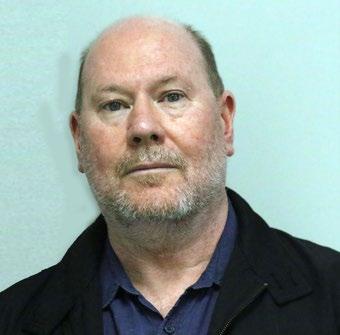
Major developments on the national Cultural Policy were announced early this year and in August, the Creative Workplaces Council was formed. This is a new agency sitting within Creative Australia, the newly renamed Australia Council. Creative Workplaces promises progress on a broad front, addressing all workplace and industry practices that undermine the safety, respect and recognition of artists.
The Council is comprised of Kate Jenkins AO, former Sex Discrimination Commissioner (Chairperson); Tina Lavranos, Executive Director at DarkLab; Michel Hryce, Director of People and Culture at Michael Cassel Group; Tony Ayres, Writer, Director and Producer; Ruth Hazleton, Singer, Musician and Songwriter; Fiona Donovan, Production Designer and Bjorn Stewart, Actor, Writer and Director, a Kuku Yalanji/Wemba Wemba man. Ruth, Fiona and Bjorn are all MEAA Federal Councillors.
While SOMA/MEAA members continue to bargain across the orchestras and OA, we are also addressing issues for freelance orchestra musicians with a focus on developing practices to provide more direct feedback and advice to musicians about hiring decisions. A national freelance orchestra survey has attracted a high number of
respondents and this will form the basis for ongoing work with these members.
Another significant development is the operation of new workplace laws which will have the effect of stopping the practice of orchestras filling ongoing roles through a series of fixed term contracts.
SOMA has also written to the CEOs of the major orchestras offering to facilitate a process of developing industry level policy. While bargaining is a useful method for maintaining and improving conditions, it is limited. Real progress on security of work, the development of future musicians, audiences and community engagement, will be best achieved through sector level co-operation and collaboration, with a view to forming progressive policy and influence with decision makers, including governments.
It’s pleasing that the invitation has been taken up by some CEOs and that we have begun to find common ground and scope out the task we have set ourselves. We’re confident that other companies will join in with this work over the coming months.
*formerly Director of MEAA Musicians, now incorporating Director of SOMA and Musicians
MEAA represents thousands of Australia’s musicians and cultural industry workers generally, as performers, crew, technicians, writers, journalists and others.
Our membership gives us broad, deep and historical knowledge of the sector and the means to reflect and act on the full range of issues affecting them.
Our members’ interests are grounded in what it takes to create secure careers. We are focussed on the situation of the sector, on what needs to change, what needs to continue and what it will take to do this.
Although we have expertise in industrial matters, we are interested in more than the narrow range of industrial concerns.
We understand that no matter how successful we are at negotiating and implementing industrial agreements,
we will ultimately fall short of our objectives if we don’t successfully engage and act at a sectoral level, understanding and working to influence the forces that shape the sector.
This means that we are motivated to find solutions through funding, workforce development and regulatory reform and we understand this requires understanding and consideration of history, business conditions and action on politics and policy.
Since 2019 MEAA has been renewing our strategic approach to the cultural sector. Through focus groups, desktop research, surveys, key informant interviews and engagement with thousands of our members and supporters we have developed a platform that will strengthen our efforts, providing focus for policy and
planning priorities based on the intrinsic, developmental, social and economic value of participation.
Key insights and questions we have developed include:
• How do we improve access and engagement in cultural and civic activity?
• Where are the barriers and deficits in the provision of cultural assets and how are these best overcome?
• If local access to cultural activity is the key to building long term engagement, audience development and the social licence for cultural policy and investment, what must be done to improve this?
These are the areas of activity where our members make a difference; this is why their work is important. An hypothesis is that improving community participation will lead to better recognition of all forms of cultural sector work, better jobs and greater

economic and social benefits. It is what we mean when we talk about the public interest in cultural sector funding and regulation in performing arts, screen and media.
• To provide MEAA with data on public opinion towards orchestras and their musicians.
• To better understand the potential for increased attendance in each of the major markets.
• To quantify the public support for orchestral funding programs.
• To apply some of the theoretical constructs of consumer behaviour to the marketing of classical music concerts.
• To explore classical music consumers for use in developing more effective marketing strategies, with a focus on defining new targets.
• To stimulate the participating orchestras to design and test new marketing strategies based on the research results.
The main findings of this work are:
• Event attendance has dropped across all categories (including live sport).
• Awareness of classical music is high with 40% listening to the genre regularly.
• Cost remains a significant barrier to attendance.
• Orchestras have strong reputations in terms of their benefit to Australian culture.
• After receiving targeted messaging about orchestras, one in two Australians support an increase in Government funding.
While any effective effort to improve the sector would be guided by these findings, it would also need to deal with other risks, threats and opportunities. In particular, given the high proportion of public funding provided to orchestras, opera and ballet companies and ignoring whether or not the quantum is sufficient, there is the challenge of finding what is necessary to avoid this fact being turned against us.
How do we counter negative stereotypes of classical music; identify and platform advocates for our artform; win over our critics, especially those from within the performant arts community? How do we strengthen the public interest case for funding? What will it take to strengthen the social licence of funding? If part of the answer is to increase recognition and public support for all cultural activity, how might this be achieved?
Our answer to these challenges is to develop comprehensive, evidence-based policy drawn from community interest.
The MEAA membership base and our reach beyond this is a strength we seek to build on, as we recognise that we have a shared responsibility for the health and wellbeing of what is essentially a community asset. Just as joint effort within the sector is the best way to preserve and develop this asset, we also recognise that no government or institution alone can lead and sustain such effort. It’s up to us to find a way.
Lachlan Bramble, Associate Principal 2nd Violin
Adelaide people love festivals. So much so that we call ourselves the festival state. Put a couple of concerts together and call it a festival and the punters come with bells on, especially if the festival has music by Sergei Rachmaninov.
Conductor Andrew Litton and pianist Sir Stephen Hough celebrated the 20th anniversary of their landmark recording in Adelaide because, as the conductor remarked, the ASO was the only orchestra crazy enough to take the gig. Audiences loved the four concerts in two weeks and the orchestra
relished the deep dive into the composer’s piano music and other Russian repertoire.
That other festival of note had the ASO in the pit for a staged version of Verdi’s Requiem which divided the purists and those who were captivated by the Swiss ballet troupe’s embellishment of this mass for the dead.
Opening night of the Adelaide Festival was an outdoor community event with the ASO backing the spectacular and moving Marliya Choir in their production Spinifex Gum. Warming up the audience was our Citizens’
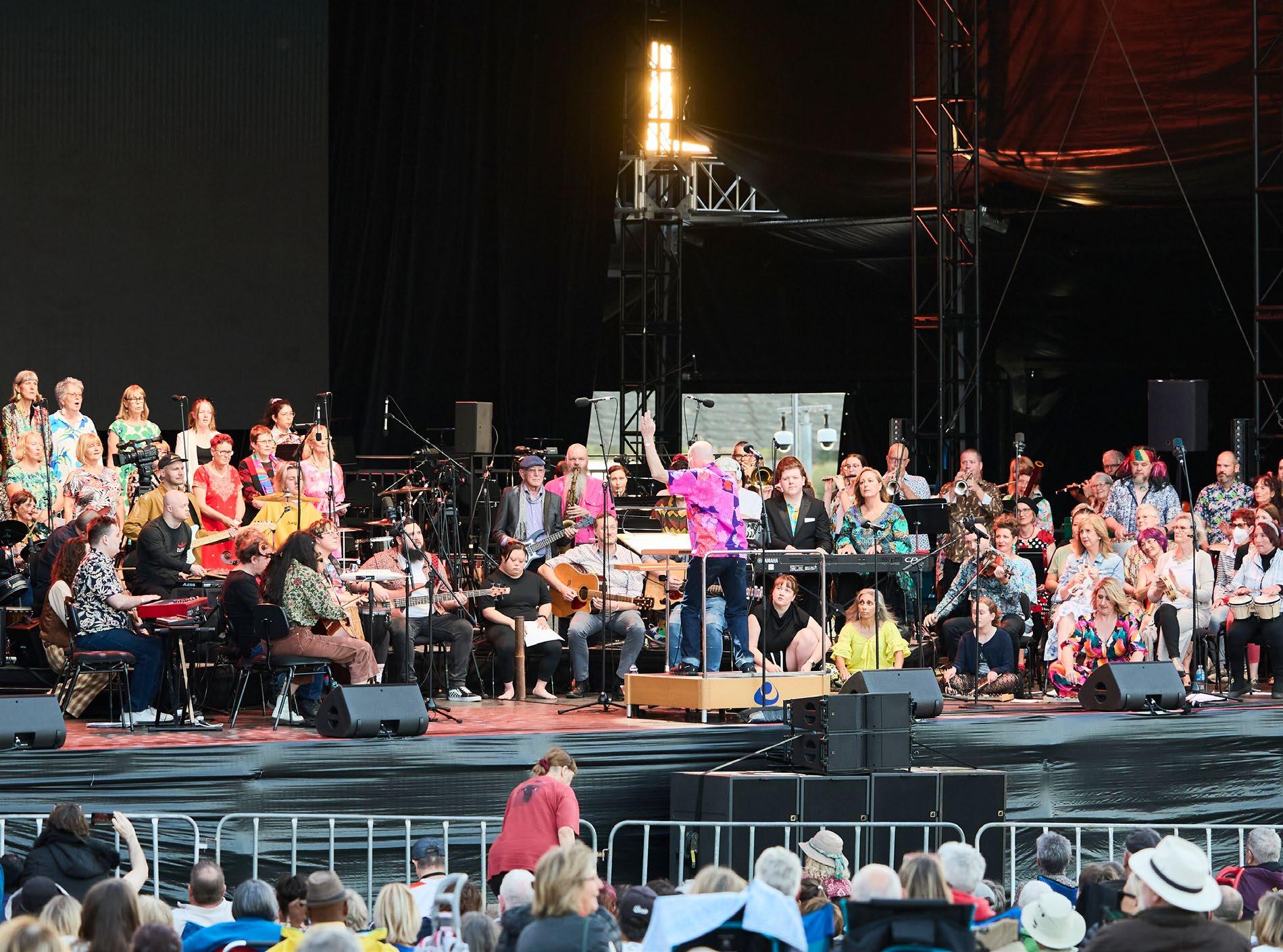
Orchestra, a group of anyone and everyone, mentored by ASO musicians and performing music they had collectively written. It was an uplifting sight and sound to behold.
If that were not enough, the ASO performed a Beethoven Festival of all nine symphonies in two weeks with conductor Douglas Boyd ensuring there was plenty of musical peperoni.
The orchestra also had an accompanying role in the State Opera of South Australia’s Gilbert and Sullivan, which though enjoyed thoroughly
by the audience and full of twee hilarity, was not an artistic highlight.

Somewhere between all these festivals we farewelled Managing Director Vince Ciccarello after nine years and welcomed Colin Cornish as our new Chief Executive Officer. Colin is well known to the Australian orchestral community through his recent leadership of the Australian Youth Orchestra.
ASO has also had many new players join our orchestral family. Kate Suthers has returned
from the United Kingdom to Australia to become our new Concertmaster and David Khafagi (Trumpet), Tim Skelly (Horn), Amanda Tillett (Bass Trombone), Justin Julian (Viola) and Sami Butler (Percussion) are all to be congratulated on successfully completing their trial periods.
We also farewelled Carolyn Mooz, Sarah Denbigh and Jenny Newman from the orchestra, Jenny having been with us for more than four mightily impressive decades. And keeping busy off-stage is Adrian Uren (Horn)

and wife Amy Baker who welcomed baby Matilda Olive Uren into the world in June.
Keeping the ASO engine running behind the scenes is our Musicians’ Agreement which rolled over into 2023 with a 3.5% increase in pay, albeit well below the highly flammable inflation figures.
Enormous thanks to Paul Davies (Director of MEAA Musicians) and Sana Shaikh (MEAA National Industrial Officer) who continue to support orchestral musicians every day.

Here at MSO, we feel well and truly back in the swing of things after the long disruption caused by the COVID pandemic.
Our new Chief Conductor Jaime Martin is off to a fast start, embarking with the orchestra on several large projects, including Mahler and Dvorak symphony cycles. Maestro Martin brings warmth and excitement to the podium and our concerts together have been greatly enjoyed by musicans and audiences alike.
The annual Sidney Myer Music Bowl concerts last February were highly successful, the best attendance we’ve had at the Bowl in years.
Some other highlights for the current season include a return visit by Winton Marsalis and the Jazz at Lincoln Center Orchestra, live recordings last March with the incomparable Siobhan Stagg singing Strauss and Debussy, electric performances of Britten’s War Requiem and special 40th anniversary performances of The Man from Snowy River live to film. Some of our members remember performing the original soundtrack back in the 80s!
Another important initiative that we revisited this year was our collaboration with the Special Region of Yogyakarta, Indonesia. Some of our members, along with management, travelled there to deliver masterclasses, management workshops and a youth music camp to aspiring local young musicians.
The musicians of the MSO have recently agreed with our management on a new three-year Enterprise Bargaining Agreement after an arduous period of negotiations lasting well over a year. We feel, while more work still needs to be done, that this agreement
represents a step forward towards meeting our goals as a musican group. Comprising our first meaningful pay rises in quite some time, along with some strides made in our working conditions, we hope that this will usher in a new era of growth and prosperity for the company. Many thanks go to our

entire Players’ Committee and especially our outgoing SOMA exec, Michael Pisani, for his tireless work on our behalf.

The past year has ushered in a period of renewal for the MSO musicians’ cohort, with many positions that had been vacant over the COVID period being filled and also some sad but fond farewells to some of our longstanding members. Trevor Jones (Section Viola) and Miranda Brockman (Section Cello) both retired early this year after many years
with the orchestra; we wish them both well with their future endeavours. New to the orchestra are Elilna Faskhi (Assistant Principal Cello), Shaun Trubiano (Section Principal Percussion), Karla Hanna (Section First Violin), William Clark (Section Viola) and Rebecca Proietto (Section Cello). On trial are Jenny Khafagi (Section Viola), Caleb Wong (Section Cello), Andrew Young (Associate Principal Horn), Josiah Kop (Section Horn), Mark Davidson (Section Principal Trombone) and Matthew Thomas (Principal Timpani).
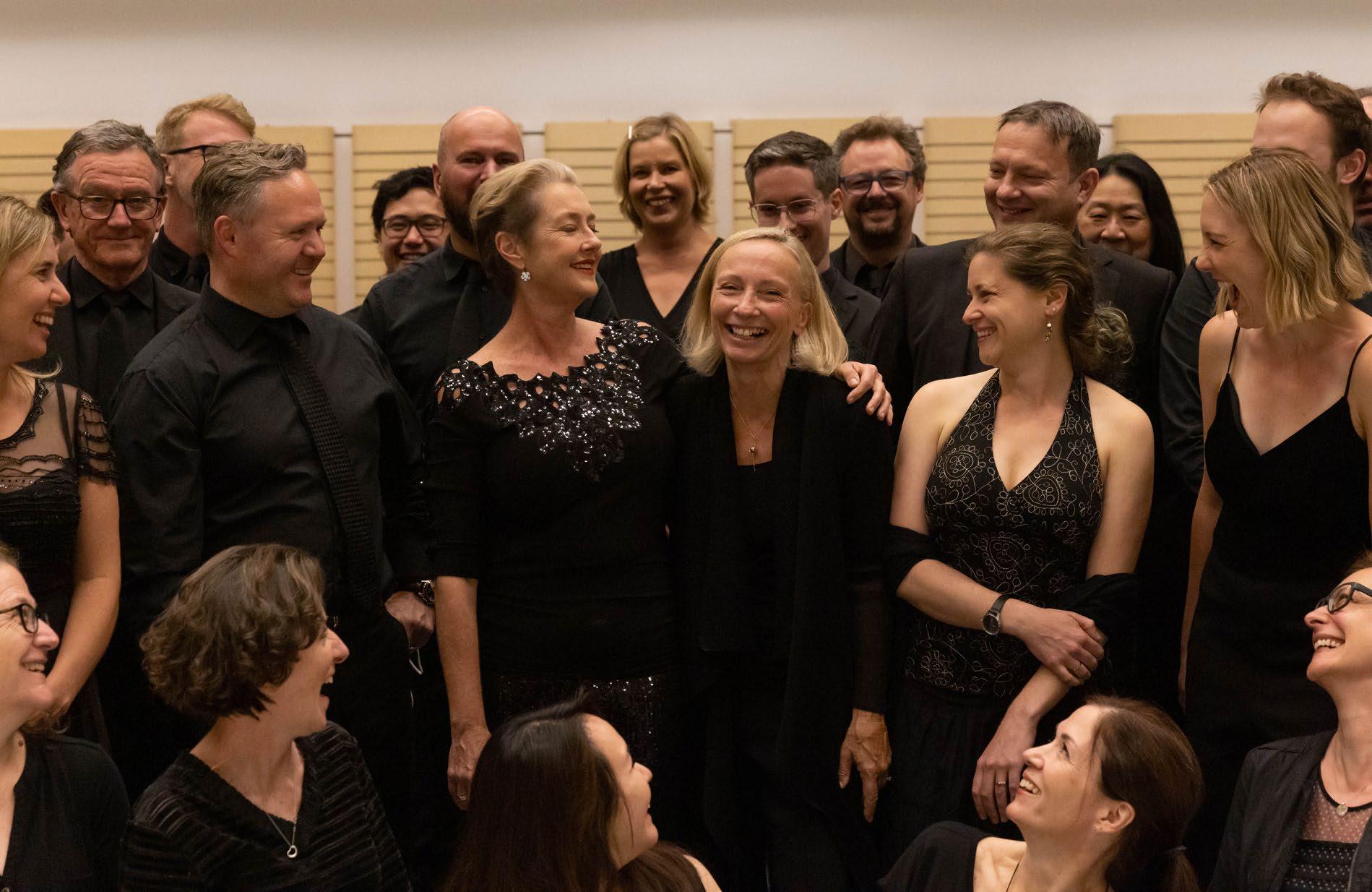 Sydney Braunfeld Principal Horn
Sydney Braunfeld Principal Horn
After the tumult and uncertainty of the past three years, I’m pleased to report that the Opera Australia Orchestra has well and truly resumed its busy performing schedule, uninterrupted by COVID cancellations now for 18 months. We’ve been able to carry on as planned with successful seasons of opera, ballet and musical theatre largely thanks to the vital contributions of freelancers who continue to step in and fill our many, many vacancies.
In the twelve months since my last Senza Sord update, the OAO finds itself saying hello to one notable woman and farewelling another – Jo Davies and Nicolette Fraillon respectively. Firstly, a big welcome to Jo
Davies from the UK, who in December of last year was appointed the new Artistic Director of Opera Australia! Jo is an acclaimed opera and musical theatre director with extensive experience at the English National Opera, Royal Shakespeare Company and London’s West End.
Although Jo won’t officially be starting in her new role at OA until November of this year, player reps have already had the chance to meet her and start to impress upon her the importance of rebuilding our permanent ranks. We look forward to the big reveal of Jo’s first season of opera programming which promises to be substantially progressive and refreshing.
After 20 years as Music Director of The Australian Ballet, the indomitable Nicolette Fraillon has finished her tenure with the company by conducting a ballet of special significance. In May, we performed the Identity program which was a double bill containing works composed and choreographed entirely by talented Aussies, including a groundbreaking new work written by Nicolette’s wife Deborah Cheetham Fraillon. We wish the newlyweds a joyful and fun next chapter!
Repertoire highlights of the past twelve months include several of the usual favorites such as Don Giovanni, La Bohème, Aida and Rigoletto, but also less familiar works such as Adriana Lecouvreur composed by Francesco Cilea and Offenbach’s French grand opera The Tales of Hoffmann. In August, OA will once again host world-renowned tenor Jonas Kaufmann as he stars in the Ponchielli
opera La Gioconda. Home-grown superstar Jessica Pratt will also be featured in a concert performance of famous “mad scenes” of the operatic repertoire.

In musical theatre news, OA’s recent seasons of Phantom of the Opera (the mainstage version as well as the HOSH outdoor production on the Sydney Harbour) were wildly successful and lucrative in 2022. The company is hoping to match those earnings by staging Miss Saigon in the Sydney Opera House later this year and another fabulous outdoor production on the Harbour next year.
On the industrial front, last year we ratified a one-year rollover Enterprise Agreement with no change to conditions, inclusive of 4% backpay for 2022 and a further 3% increase for 2023. We are expecting to begin a more substantial round of bargaining shortly – we intend to continue chasing CPI and hope
to substantially improve wages/conditions, including for freelancers.
The OAO currently comprises just 37 permanent players, yet we still maintain the unofficial title of “busiest orchestra” in the country. This can only mean it’s safe to say, we are also the most highly casualised orchestra in the country.
Ever since the company-wide job freeze was lifted, many members of the orchestra have felt simultaneously excited for the prospect of rebuilding our permanent ranks, yet also deeply conflicted at the idea of re-auditioning positions made “redundant” during the height of the pandemic. The 16 players
who were dismissed so arbitrarily in 2020 are irreplaceable, yet here we are holding auditions for some of those very same jobs lost. Whilst we acknowledge this conflict and feel complex emotions on the subject, we also must recognize the acute peril we would face in failing to recruit. Assuming a typical number of retirements and resignations each year, it will take the OAO more than a decade to reach our pre-redundancy number of 56 and a further three years at that same pace to reach 62, the number of members stipulated in the current funding arrangement. Clearly, we have no time to lose, which is why auditions recommenced in March of this year.
Winners of this initial round of auditions include Principal Contrabassoon Tim Murray, whose trial is currently underway, Tutti Violin Amanda Chen and French Horn Lee Wadenpfuhl, whose trials are slated to begin shortly. We congratulate and welcome them all! Our recent audition for the Principal Flute job was unsuccessful, so we’ll be running that process again later this year.
August of 2022 saw the departure of our concertmaster Jun Yi Ma, who had been in the role for eight years. We are currently recruiting to select Jun’s successor and are pleased to be welcoming four promising trialists later this year.
In other milestone news, we congratulate OAO Viola Tara Houghton and freelance flautist Kate Proctor on their recent marriage.
To finish on a sombre note, we deeply mourn the death of beloved Associate Principal 2nd Violin Mark Fitzpatrick, a 40-year veteran of the OAO and a staunch union advocate. Mark was a much-loved member of our orchestral family and his absence is felt daily. A fulllength article paying tribute to Mark’s career and industrial contributions can be found in the Final Note at the end of this issue.

Our reps have been negotiating our next EBA for quite a while now. There is a particularly nutty issue that has taken up a lot of time and discussion and entailed many meetings of players in order to gain a cohesive and consensual idea of where we’d all like to see the back-and-forth go, as it’s an issue of considerable importance. But I can’t say more! I’d like to convey though that our reps (Ben Anderson, Kylie Davies, Tim Francis and Josh de Graaf) have been fantastically impressive in the
way they’ve guided us through the debate, both between them and the management negotiating team and between them and the player group. I’m optimistic a good outcome will be achieved soon.
As always, Orchestra Victoria’s range of activities and happenings has been substantial over the last 12 months. At the top of the list is the departure after 20 years of Nicolette Fraillon from the position of Music Director of The Australian
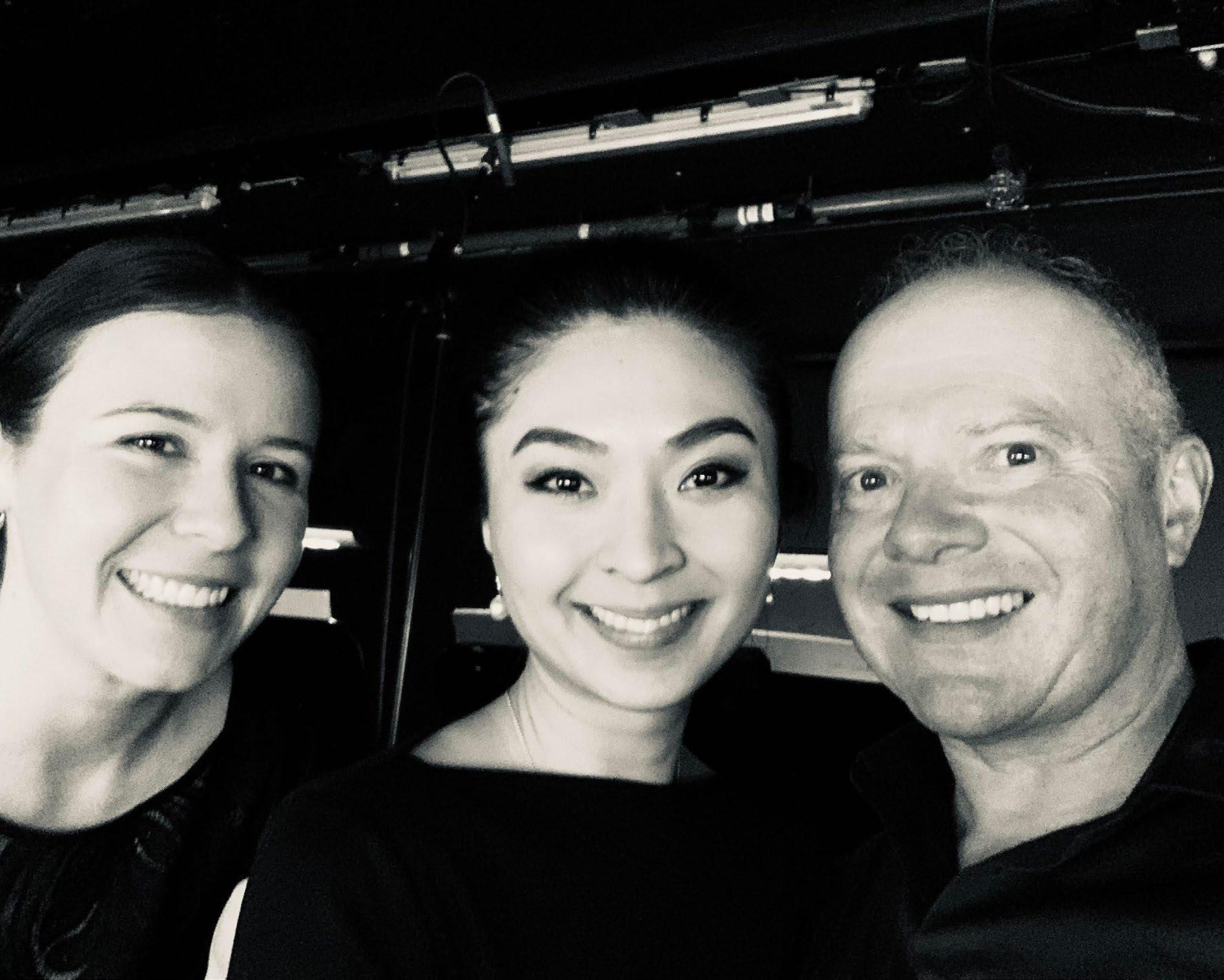
Ballet and since 2014, the Artistic Director of OV. We presented Nicolette with a charcoal drawing by former clarinettist /artist Catherine McCorkill, of Nicolette pondering in the music room of Murndal, an historic house in Coleraine.

Nicolette succeeded Charles Barker, who is now Principal Conductor of the American Ballet Theatre and who returned in March to conduct Don Quixote, which was a blast from the past for many! Nicolette married her partner, Deborah Cheetham Fraillon AO in January of this year, returning to conduct a season of Identity for TAB in June which featured a work by Deborah – The Hum –
and choreographed by Daniel Riley, a Wiradjuri man and Artistic Director of Australian Dance Theatre. The other work on the program was Paragon, by Australian composer Christopher Gordon, with choreography by Alice Topp. Nicolette’s final season was Romeo and Juliet in October 2022, so we were glad to have one of our favourites again in the repertoire. Balanchine’s Jewels followed in the season, with music by Fauré, Stravinsky and Tchaikovsky. Both these seasons were conducted by Englishman Daniel Capps, but we will be moving into greater collaboration with the new Music Director and Chief Conductor of TAB, Jonathan Lo. Welcome Jonny!
And we wish Nicolette and Deborah all the best for their individual and collective futures.
On a similar note regarding people leaving us, I’d like to pay a small tribute to Dobbs Franks, who passed away in July at the age of 90. Dobbs was engaged by Australian Opera in 1969 to conduct the newly inaugurated Elizabethan Melbourne Orchestra (now Orchestra Victoria) for a nine-month national tour of Gilbert and Sullivan. He was also Music Director of TAB from 1970 to 1971 and from 1979 to 1983, during which time Dobbs was a regular visitor to our orchestra. I’m sure there are still quite a number of us who remember Dobbs well. Vale Dobbs.
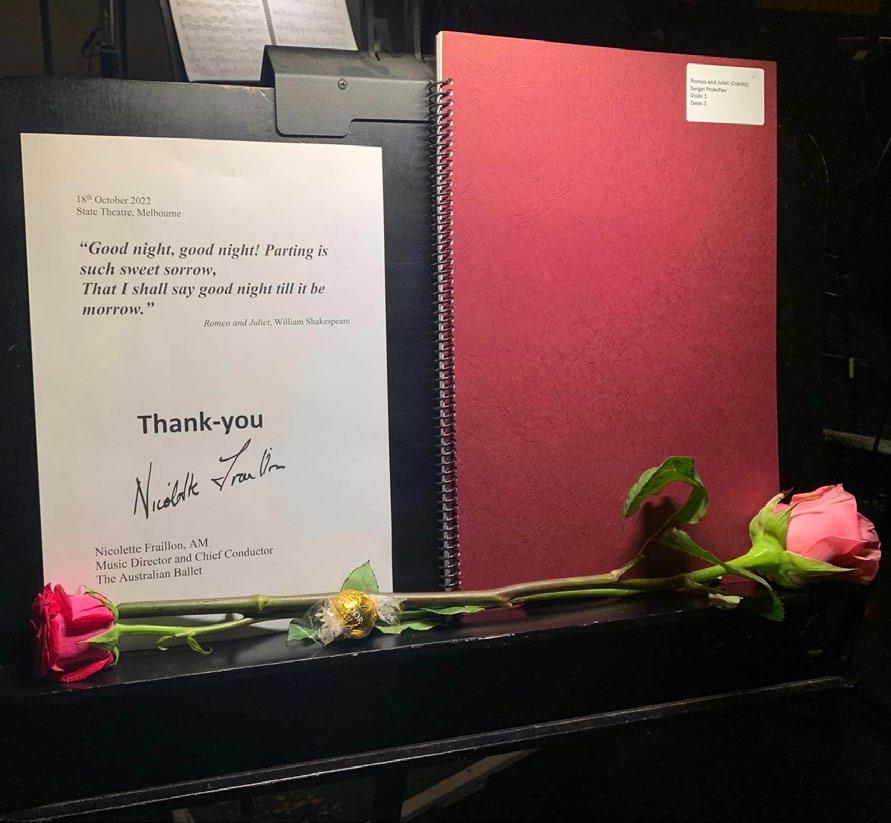
The Tokyo Ballet brought Giselle to us and despite much groaning prior to the season, I think many of us eventually enjoyed the experience of playing a score that was perhaps a bit closer to the original. The audiences loved it, so as a collaboration between TAB and the Tokyo Ballet it appears to have been a great success.
We have been venturing – like many I feel –into the world of gaming, with a recording of the music for the role-playing musical
video game, Stray Gods. Other self-present programs have included a chamber music series, a celebration of LGBTQIA+ composers in a concert Pride and Joy for the Midsumma Festival and a children’s musical story, Little Puggle’s Song, that has been very successfully playing in Melbourne and travelling the regions.
As part of the Melbourne International Film Festival, the 1922 silent movie, Nosferatu, was performed in Bendigo with a new orchestral score composed by Will Larsen and Rasa Daukus. The audience loved it.
We also revisited our wonderful collaboration with our favourite Warrandyte guys, The Teskey Brothers, which included a very fun trip to Sydney in November last year. Phantom of the Opera opened for an extended season in November, while A Christmas Carol with Victorian Opera was squeezed in between countless performances of everyone’s favourite Lloyd-Webber spectacular…

Opera Australia only required us for three staged performances this year – Tannhäuser x two and Satyagraha x one. Some of our unrequited desire for opera was fulfilled by Victorian Opera’s September 2022 Elektra, with young musicians from the Australian National Academy of Music. To imagine that years ago, we performed up to seven operas in the earlier months of the year.
I would like to acknowledge our management for their incredibly hard work over the last 12-18 months. With OV having to leave our rehearsal studios and find another suitable venue, the resourcefulness of the team has been sorely tested, aside from all the day-to-day work of scheduling the orchestra and players. With people leaving and others arriving and the ongoing need to find personnel to fill the roles, I think at times the anxiety levels have been extreme. But as our (relatively) new General Manager, Jacinta Ewers, relayed at our recent company meeting, things are looking up!
The fact that we have had to move to The Meat Market in North Melbourne, that the State Theatre will be closed for up to three years from 2024, meaning The Australian Ballet (and us) will be moving to the Regent Theatre and that Opera Australia are yet to finalise their plans for 2024… Well, thank you Jacinta, Jess, Alex, Josh, Ben, Kat, Rory, Elise, Hannah, Kieran, Gee for all your hard work.
We have been appointing players to positions, which is very heartening. Congratulations (in no particular order) to our new Associate Principal Double Bass Kylie Davies, Associate Principal Trombone Kieran Conrau, Associate Principal Horn Evan Williams and Associate Principal Flute Jessie Gu. We have also held auditions for the Richard Bonynge Orchestral Fellowships, two of which went this year to Katrina Wang (Cello) and Benjamin Saffir (Double Bass). And in May, Jess Hort was appointed to the position of Orchestra Manager, assisted by Alex Lovejoy as Deputy Orchestra Manager and Tom Woods has stepped into the role of Artistic Advisor to Orchestra Victoria. We have also said farewell to Hannah Prouse, who has worked across several roles and been fabulous.
Onward and upward...
This year marks the beginning of Umberto Clerici’s reign as QSO’s Chief Conductor and the second year for our CE, Yarmila Alfonzetti. Umberto’s energy and enthusiasm continues to be infectious and Yarmila has devoted much time and energy grappling with the challenges of running a symphony orchestra.
2023 presents more challenges than usual for QSO with the staging of OA’s production of Wagner’s Ring Cycle later this year running concurrently with our usual programme of Maestro concerts: Swan Lake, Aida and The Nutcracker
If you are wondering who thought that was a good idea, you wouldn’t be alone.
We have enjoyed some particularly notable concerts so far this year starting with the blockbuster opening performance of the 2023 season, Beethoven’s Symphony No.9.

Another standout was the successful outdoor concert in the Roma Street Parklands; our first outdoor event since COVID. Nearly 5000 enthusiastic music lovers sat in the lovely surrounds of the gardens enjoying the free concert.
We hope this event will become a yearly staple for the QSO and become as popular and iconic as the Myer Music Bowl series in Melbourne. Brisbane certainly has no shortage of outdoor venues and great weather to entice new audiences out to experience the world of orchestral music.
An exciting project this July is the Mt Isa 100-year celebration where QSO will join with the Mt Isa Community Ensemble to commemorate the town’s 100-year anniversary.
This weekend will also herald the beginning of a collaboration between QSO and William Barton called the Songbook Project, which aims to establish a multi-year, First Nations-led project to identify and support up to five First Nations emerging creatives and gather songs and stories from across
Queensland. The Songbook Project is called – Warrma piipa – My Story, Your Story, Our Journey
The QSO’s Board refresh has been frustratingly slow, but we have now recruited five new directors that includes two notable musicians and old friends of the QSO –Associate Professor Michele Walsh and Dene Olding AM.
Warwick Adeney, co-concertmaster of the QSO for 22 years, retired this year, although he definitely isn’t hanging up his fiddle. His new-found freedom is giving him time for teaching and pursuing his passion for chamber music.
Another retirement was Joan Shih (Violin) after decades of service and the QSO has recognised Brenda Sullivan (Violin), Harry Wilson (Violin), Paul Rawson (now retired as Section Trumpet) and Kaja Skorka (Cello) for each raking up 40 years’ service to QSO.
Always exciting to have trials offered – Emily Granger is on trial for Principal Harp and Gregory Lee has started his trial in the First Violin section. We have two pre-trialists for Section Trumpet, a number of pre-trialists for Section Principal Cello and QSO are asking for EOIs for the Principal First Violin position.
Opting for a tree-change, Malcolm Stewart resigned from his position as Section Principal Horn and the vacancy will be auditioned in November. Tim Allen-Ankins was successful in his trial and appointed as Associate Principal Horn earlier this year.
With the recent retirement of Warwick, there has been much discussion about the possible
restructure of the First Violin section. With any significant change in personnel, it’s important to use this period to reflect on the systems we have currently and if in fact things can be done better and more efficiently.
Whilst orchestras may appear like a slowmoving beast, if the artistic and executive leadership is strong, progressive and honest, then change can be something not to be feared.
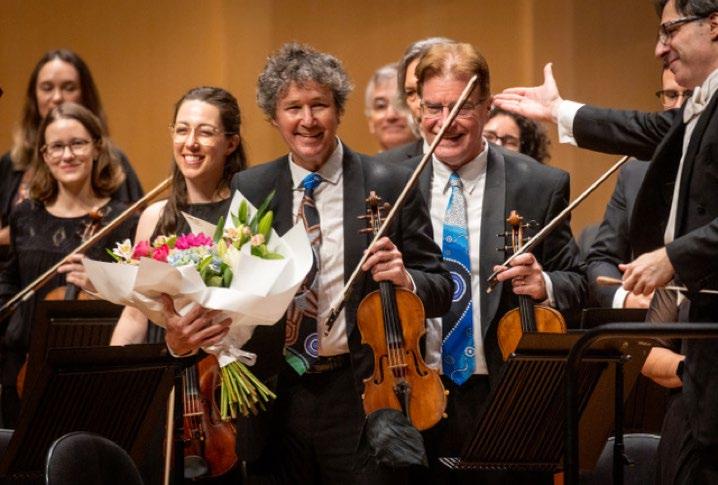
The constant battle between the workload, conditions and bean counters is ever present and as the SOMA rep talking to other reps around the country, the struggle is universal. Striking the delicate and seemingly impossible balance of artistic outcomes and profitability is complex and yes, all stakeholders need to be realistic, but without sacrificing the extraordinarily high standard of music produced by Australian Orchestras.
A new chief conductor and chief executive often heralds the beginning of a new era with different ideas and directions. As an orchestra, we need to ensure that these are sustainable in the long term and do not work against our hard-won working conditions.
At times our EA has been accused of being inflexible and restrictive; however, with efficient, well-thought out and judicious planning, programming can work hand in hand with the musicians’ EA without any need for conflict.
One of the most joyful announcements in these reports are the celebration of new babies into the orchestra family. In the past nine months, we have had Paul O’Brien, Double Bass, introduce his third bouncing baby into the world and what’s better than one healthy baby but two healthy babies!! Our violist Charlotte Burbrook de Vere and
partner Troy had twins late last year. Not that I derive great joy from crying babies, but this photo with young Holly sandwiched between sibling twins Milly and Jude has to be the best ever.

Viola player Bernard Hoey and his wife Kate welcomed their sixth child, Abigail Regina, in October last year and Kate and Richard Madden recently became grandparents to the adorable Louie. Richard now having a new disciple to initiate into the trumpet world...

Phonographic Performance Company of Australia

PERFORMERS’ TRUST FOUNDATION
Providing grants to promote and encourage music and the performing arts
www.ppca.com.au
Since our last contribution to Senza Sord mid 2022, it has certainly felt much more like a return to business as usual at the Sydney Symphony Orchestra. However, there are still a few COVID legacies remaining.
The orchestra recently returned from a fortnight of regional touring of schools and evening performances which saw us crisscrossing the state in several directions to Wollongong, Goulburn, Wyong, Nowra and Orange. We honoured a number of ‘COVID cancellations’ from previous years with incredible performances of the Strauss Oboe Concerto with our own Principal Oboe, Diana Doherty. It has been wonderful to be so warmly welcomed back to a number of our favourite regional venues. An ensemble of our brass musicians has also recently performed in Newcastle.
We also continue an extensive audition process, recruiting for several positions which had until recently been on hold. We were delighted to congratulate Brent Grapes, Associate Principal Trumpet and Callum Hogan, Oboe on the successful completion of their trials and have also congratulated Cécile Glémot, Trumpet and Dylan Holly, Double Bass on the commencement of their trials with the orchestra. We also look forward to welcoming Carrie Dennis, Principal Viola; Simon Cobcroft, Associate Principal Cello; and Antoine Siguré, Principal Timpani who will be commencing trials in the coming months.
Meanwhile audition processes are set to continue for the roles of Associate Concert Master, Principal Harp, Co-Principal Horn, Principal Piccolo and Principal Clarinet. We have also recently held casual auditions for a
number of instruments and are pleased to be welcoming some new faces into the orchestra for work. Like many orchestras across the country, we are also enjoying welcoming returning international conductors and artists to our stages, in addition to engaging in rewarding collaborations with other arts companies. High points last year were concert productions of Mendelssohn’s Midsummer Night’s Dream with the Belvoir Street Theatre and concert performances of Beethoven’s Fidelio under our Chief Conductor Simone Young. New texts for Fidelio were written by First Nations author, Tyson Yunkaporta and narrated by actor Virginia Gay.
2023 highlight collaborations have included performances with the Sydney Philharmonia Choirs of Bach’s Magnificat and guest conductor Stephen Layton and Mozart’s Mass in C Minor with Maasaki Suzuki. Other highlights in 2023 have included our season opening performance of Mahler No.1 with Chief Conductor Simone Young and a fortnight with our Principal Guest Conductor Sir Donald Runnicles, performing Brahms No.2 and Shostakovich No.10. Our brass musicians in particular are looking forward to the commencement of Wagner’s Ring Cycle with Das Rheingold in November, again with Chief Conductor Simone Young.
The Opera House celebrates its 50th Anniversary this year and the Sydney Symphony has been involved as an integral part of the celebrations. We performed as part of the House’s Inside/Out Celebrations in May this year under the baton of Umberto Clerici, our former Principal Cello and now Chief Conductor of the QSO. A full Concert Hall audience was augmented by a further
2000 audience members on the Opera House steps watching the simultaneous performance broadcast. During the concert, our Principal Trombonist Ron Prussing was acknowledged as a musician who was also present for our inaugural Opera House concert way back in 1973.
We were also thrilled to have Maestro Clerici direct us for a very special world premiere of the Violin Concerto, ‘…to beam in distant heavens…’ by our very own Georges Lentz and performed by violinist Arabella Steinbacher. The reception to this performance and work by audience and orchestra alike was something quite extraordinary and overwhelming for all concerned. We have also loved welcoming back a number of our other favourite soloists including violinist James Ehnes, pianist Stephen Hough and cellist Daniel Müller-Schott. There have also been some new faces, including cellist Nicolas Altstaedt
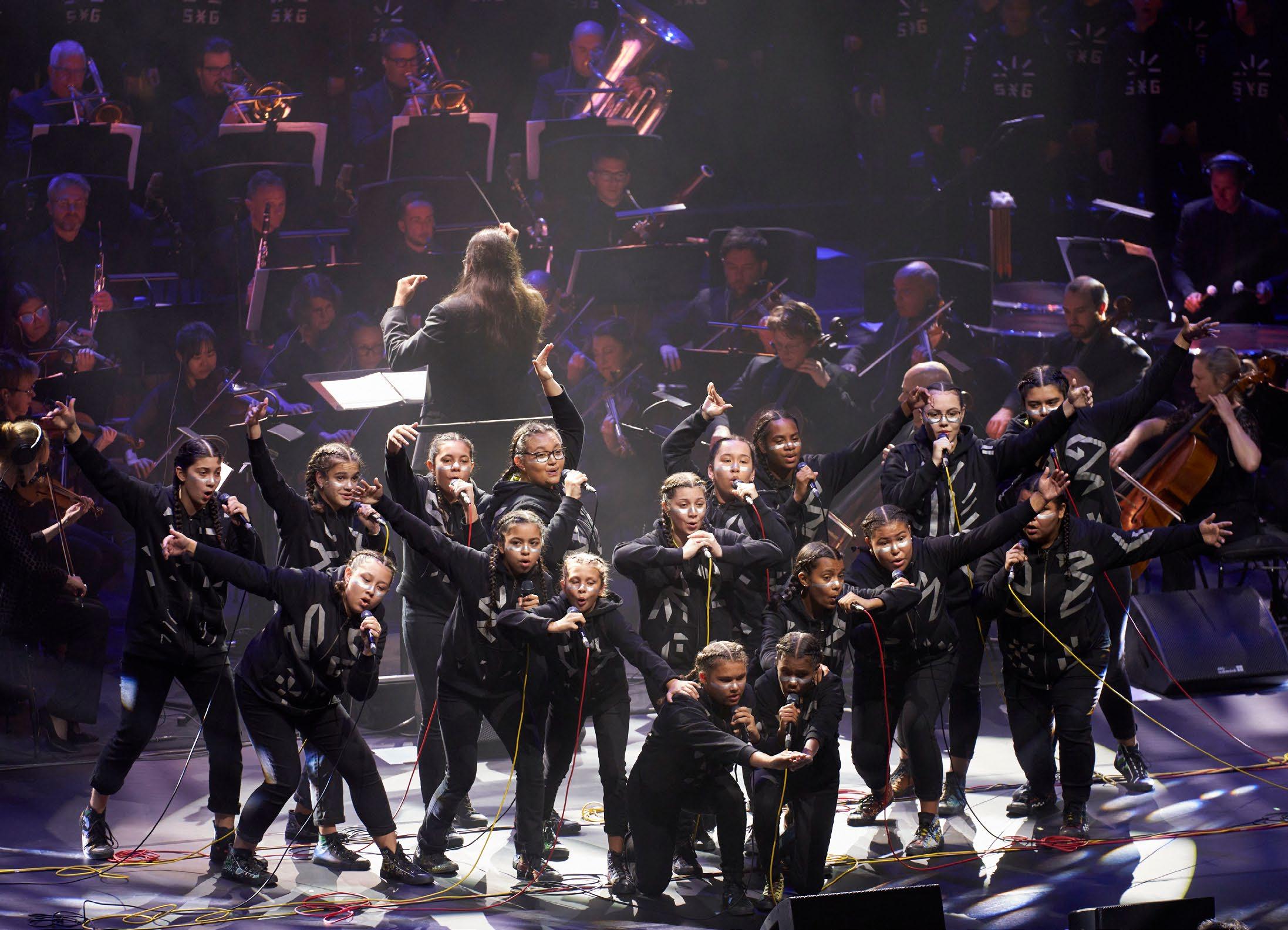
who gave beautiful performances of Elgar’s Cello Concerto and soprano Siobhan Stagg who opened our season with Brett Dean’s orchestration of Debussy’s Ariettes oubliées
We are continuing to adapt to the renewed Opera House Concert Hall and have been involved in a number of popular commercial presentations which have utilized some of the new built-in technology available. Acts have included Mo’Ju for Sydney World Pride, Hiatus Kaiyote during Sydney’s Vivid Festival and Spinifex Gum. In addition to chamber music performances for Music for Health, other extracurricular activities are also recommencing, including the recent re-launch of Vanguard, the company’s successful membership program for “the musically curious” which provides younger philanthropic professionals with opportunities to hear chamber music performances across Sydney in unique, less formal spaces.
Musicians on our committees continue their important work – in particular, the musicians on our Hearing and Preservation Committee are working hard with our management to ensure a safer working environment for all of us. Our Management Committee will be commencing another round of Enterprise Bargaining negotiations in the second half of this year. On the management front we were pleased to officially receive news of Craig Whitehead’s confirmation as the Sydney Symphony Orchestra’s CEO in December and earlier this year the appointment of William Barton to our Board of Directors. A mixed group of twentyfive employees from across the administration and musician body has recently returned from four days of training in leadership and facilitation and look forward to being part of company-wide values workshops over the remainder of 2023 as we seek to effectively grow together as an organisation and leave the COVID years behind.
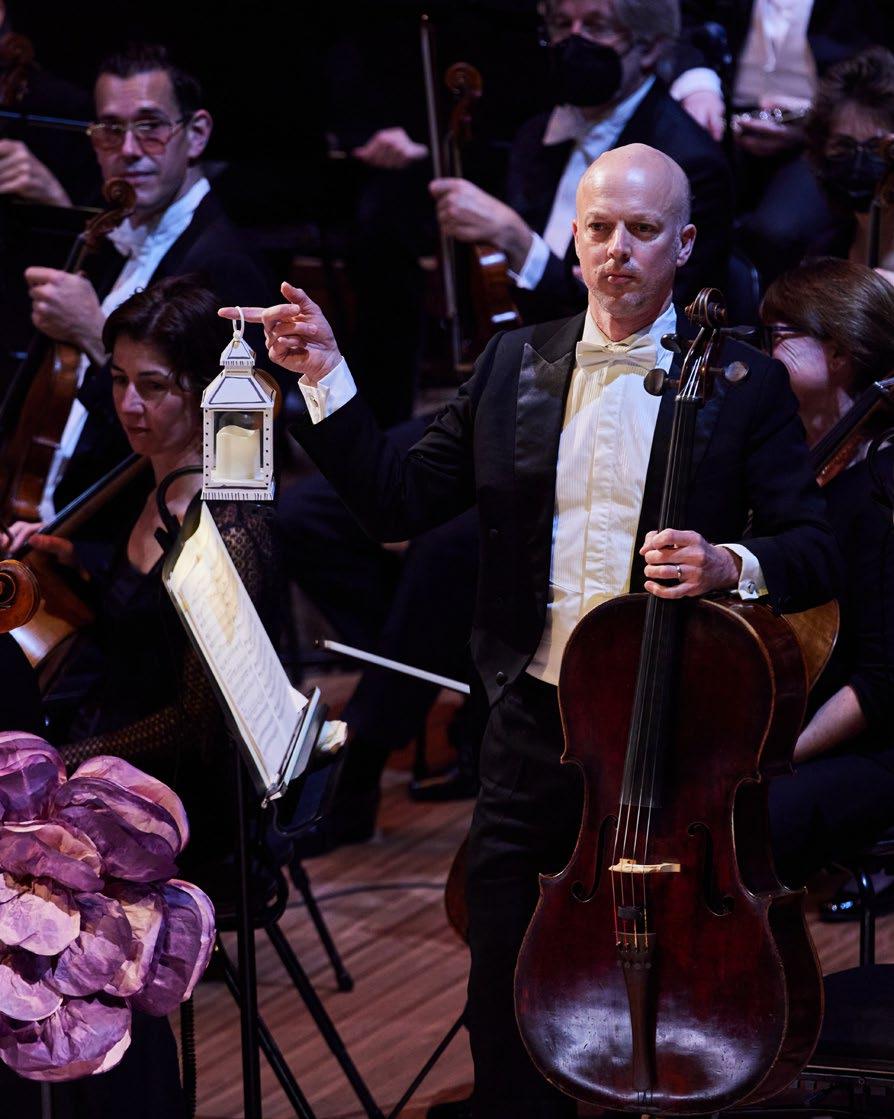
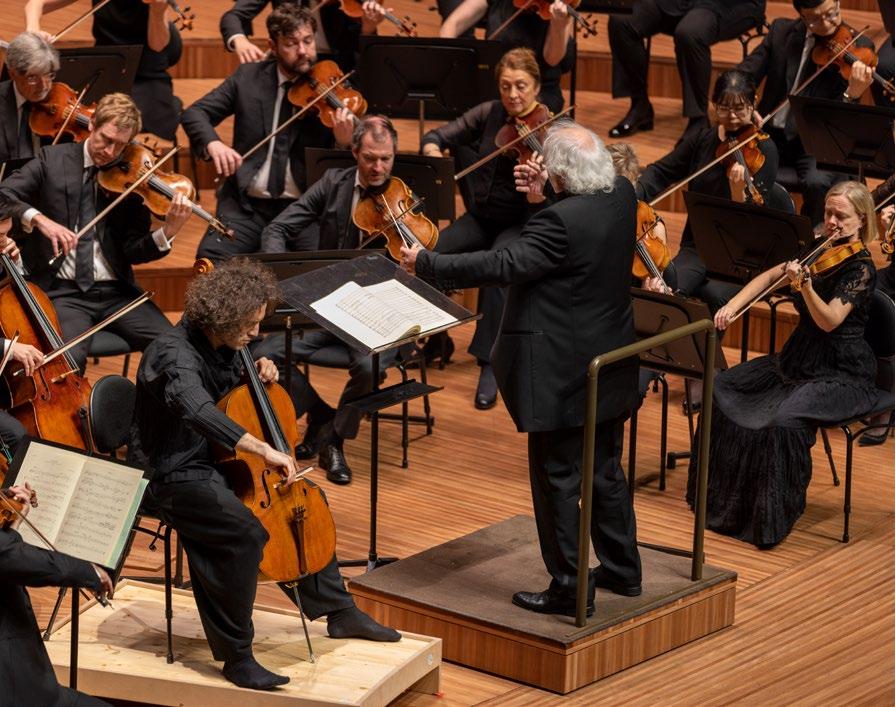



As I write this report, we are in the final stages of completing the Enterprise Agreement that will cover the members of the TSO for the next three years and set the basis for our model of work into the future.
It has been a long but largely positive experience working with our management in a collaborative model that has been steered by the relatively new Director, People and Culture, Alison Nadebaum.
In this model Matt Goddard and I have negotiated our position with Alison as a medium to the CEO and the board. We have found this to be an approach that maximised the frankness in discussion around pay and conditions and increased our effectiveness in solving issues that arose.
While we’re not rewriting the book on how negotiations are done, or revolutionising the way we work, we have – through this process – achieved modest gains and built a model of trust that we hope will pay dividends going forward.
The headlines in this agreement are:
• a 9% pay rise over three years;
• The rationalisation of tutti levels from eight to four, with a higher starting pay rate;
• Increased rates for casuals as a result of a higher base tutti rate;
• Casual instrument and dress allowances and local casual travel allowance;
• The conversion of tutti winds to principal positions;
• The establishment of a non-symphonic work rostering framework which counts calls individually (a first for TSO) and presents an artistic and productivity increase for the company.
I believe these changes can go some way in addressing the issues raised in my last Senza Sord report in 2022. The pay gap between TSO and other orchestras still exists, however earnest efforts were made on both sides to close this gap and there appears to be an ongoing commitment from management to address this in future agreements.
The success of this will depend upon the success of the organisation over the coming years in meeting its KPIs and in serving our community. How we meet these objectives will depend heavily upon our artistic output and our artistic excellence.
As one of a few less headline worthy changes in our new EA, we have also formally established an artistic committee within the confines of the EA for the first time.
The objectives of this committee are to facilitate open discussion and collaboration regarding the artistry, artistic growth and development of concert programs.
This grows out of a cultural review the company undertook in 2021 which established “artistry” as one of the core values of the company.
It may seem blatantly obvious to make artistry a core value of an arts company, but as we look more honestly at our organisations over
their histories it is worth asking the question: how often was artistry put at the forefront of company decision making? It also reminds us as musicians to ask ourselves: are we upholding our end of the bargain?
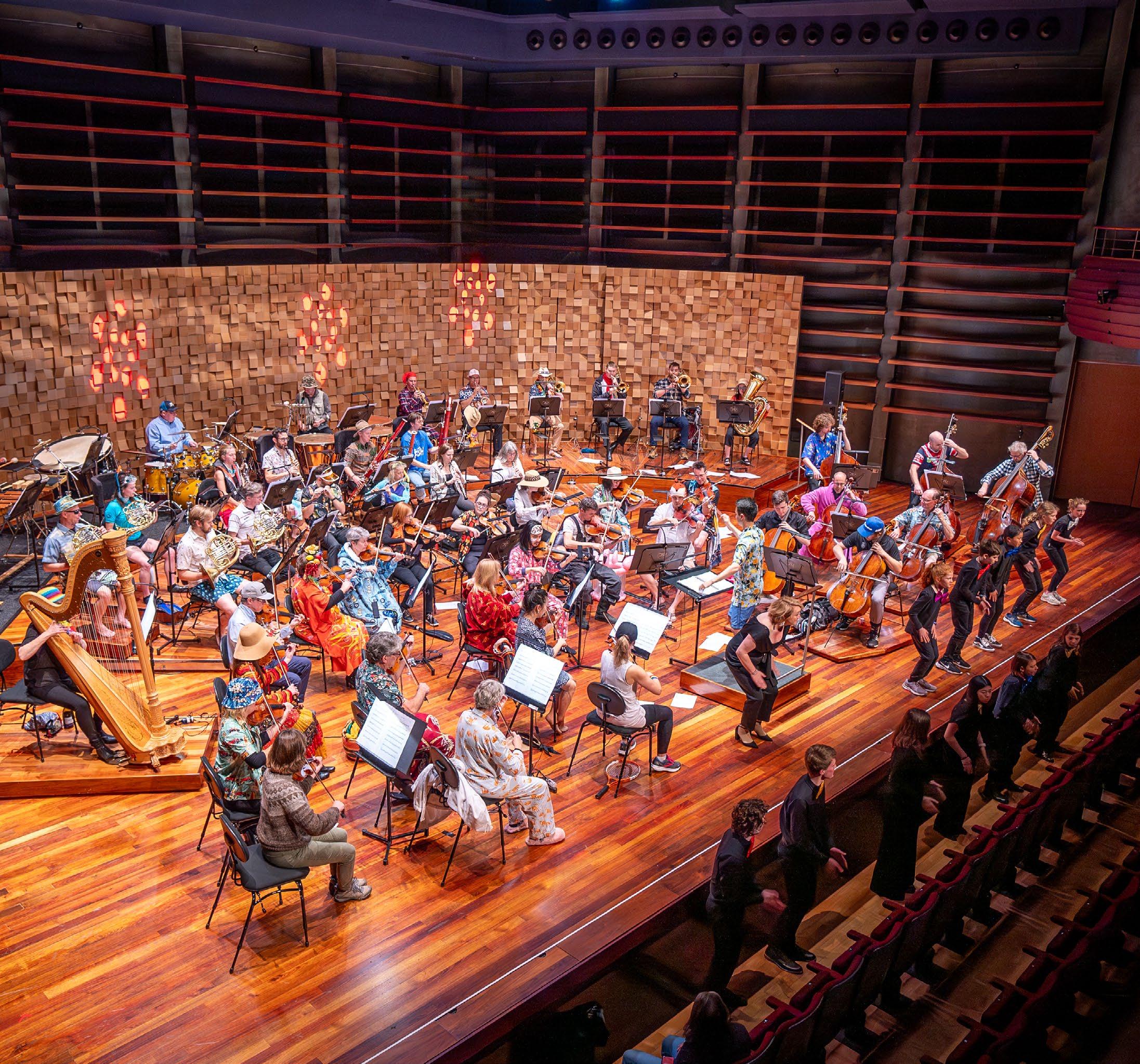
As our collective success will rely more heavily on positive engagement from government, philanthropy and (where practical) ticket sales, we are going to have to lean more on our strongest bargaining lever – our artistic excellence. Our excellence is a team pursuit and we have much to learn from looking at other peak performance ventures.
I have become fascinated by Formula One and how a sport that seems intrinsically selfish – focused around one man in a machine – is actually a sport that requires peak performance by every single member of a large organisational team. The best driver in the world cannot perform without a great machine. The engineers’ livelihood and success depend on great drivers. They in turn each require a great crew, great strategists and great leadership.
Every element of the organisation has to work together to achieve peak performance and underperformance at any level of the
organisation affects the success of the whole. We would do well to benchmark our organisations against other peak performance organisations.
We must assess how we each play a role in our organisation’s overall success and how underperformance with our team is remedied.
We rise and fall to the level of each other’s success; therefore we owe it to ourselves to be clear-eyed in our assessment of the performance standard – and artistic efficacy –of every part of our organisation.
As a delegate who campaigned so strenuously for better wages to help retain talent within the orchestra, I acknowledge that we must also present strong artistic arguments to incoming members to make TSO their home for their careers.
Music is a vocation that attracts passionate people. Therefore, it is critical that in addition to offering compelling remuneration, we must also offer enthusiastic and talented musicians a fulfilling artistic pathway.

TSO has been auditioning to fill a backlog of vacancies created by retirements and early departures from the company. So far we have failed to fill our vacancies in Tutti Violin, Tutti Viola and Second Bassoon.
However, we have successfully filled Tutti Cello, Principal Viola and Principal 3rd Horn, with Nicholas McManus, Caleb Wright and Claudia Leggett, respectively.
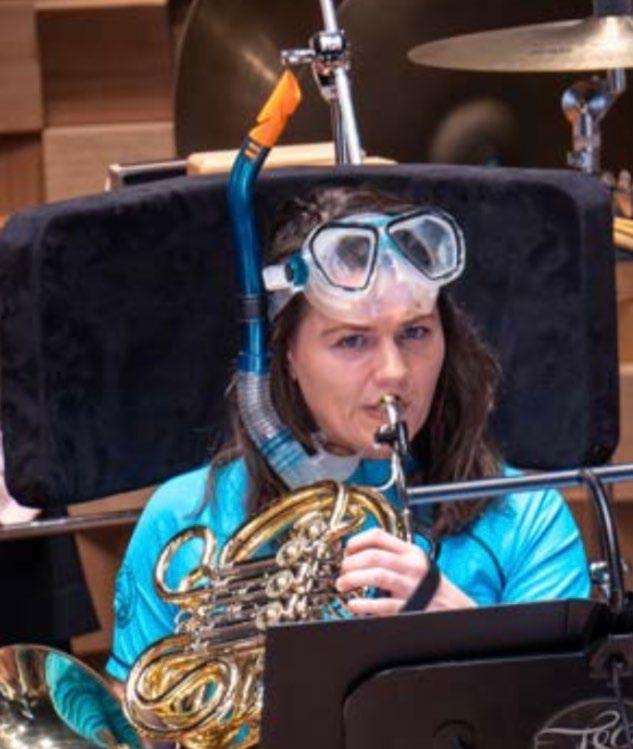
We have Julian Leslie on trial for Tutti Horn, Ji Won Kim on trial for Associate Concertmaster and we will soon be joined by Pius Choi on trial for Second Trombone.
We will soon also have a Principal Flute on trial pending the outcome of an upcoming final round audition, which has been some time in the making. We look forward to working with these incoming members of our orchestra for many years to come and

also look forward to the artistry they can offer the company.
In other happy news, TSO will be welcoming back Edwina George (Violin) in the second half of 2023 after her year off on parental leave after welcoming a bouncing baby boy Nathanial. Congratulations are also in order for Jonathan Bekes (Principal Cello) and his wife Alexandra who welcomed an adorable baby girl, Gemima Bekes.
2023 has seen WASO return to its most pre-COVID conditions with the orchestra returning to its full gamut of international and interstate performers and conductors. With 2022 still consisting of border closures and the inevitable spread of the spicy cough, it has been nice to see the return of many familiar faces and a more uninterrupted beginning to the year.
Outside of the performance sphere, the biggest impact on WASO was the announcement by former Premier Mark McGowan of an increase in funding for the redevelopment of the Perth Concert Hall. Whilst attending the season opening Masters Series concert, Mr McGowan committed a total of $150 million to “realise the vision for a premium cultural venue – the home of
music in Western Australia and permanent residence for WASO”. Culture and the Arts Minister David Templeman commented: “We recently celebrated 50 years of performances at Perth Concert Hall and it’s important to ensure the heritage-listed performing arts venue can be enjoyed by future audiences for generations to come”.
Importantly, this refurbishment will increase our state’s arts and culture offerings and contribute to recovery of Perth’s culture, arts and tourism sectors beyond the pandemic. The redevelopment, along with preserving Australia’s best concert hall acoustic, will include a home for WASO alongside significant upgrades to public spaces. The planned changes will provide a vastly improved audience experience.

The challenges for WASO now lie in finding a new performance venue for the period in which the redevelopment will take place. There are shortcomings in all other proposed venues, but we hope our audiences will come along for the ride with us.

In October 2022 it was announced that Asher Fisch had extended his contract until the end of 2025, a period that will see him become WASO’s longest serving Principal Conductor.
The orchestra has undergone its own redevelopment during this period, one that has greatly strengthened the artistic understanding and quality of performance. Recent performances of Act 1 of Die Walküre showed that the level of performance is only improving. The aforementioned performances saw the orchestra play alongside musicians from the Australian National Academy of Music in a continuation of a multi-year partnership.
Similar side-by-side projects have been performed with the West Australian Youth Orchestra and the University of Western Australia’s Conservatorium of Music, an expansion of WASO’s education product.
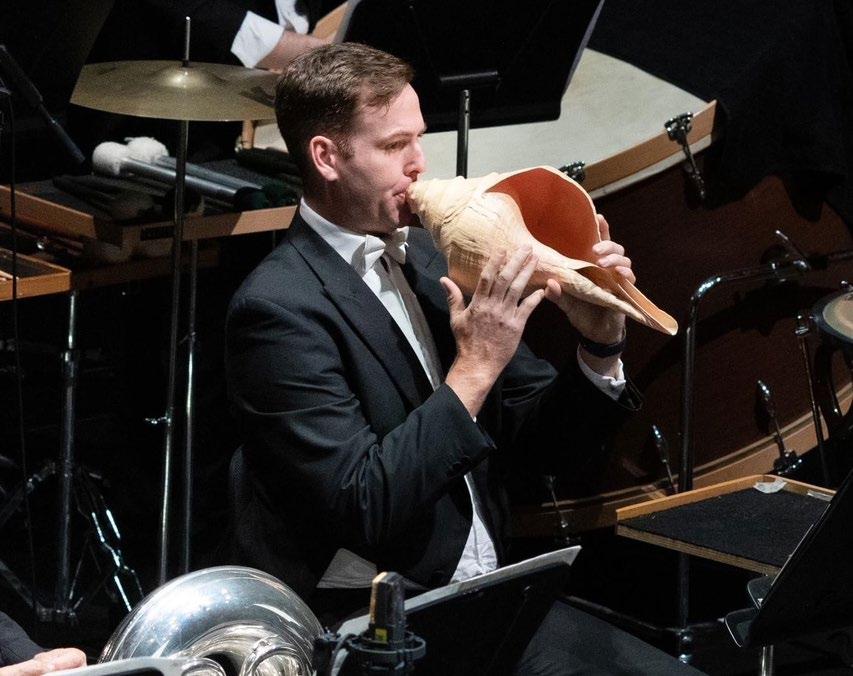
Other highlights of the year have included Toy Story and Skyfall in film; outdoor performances in Rockingham and Claremont; a full bells and whistles production of Carmen at the WACA with WA Opera; Strauss, Scriabin and Prokofiev with Asher; and a Latin themed program of Turina, Rodrigo and Revueltas featuring the debut of yours truly as Principal Conch.
Retirements since the last edition of Senza Sord have seen the following players with almost 200 years of combined experience leave WASO; Andrew Tait – Double Bass, Leanne Glover – Cor Anglais, Lorna Cook –Clarinet, Phil Holdsworth – Bass Trombone, Cameron Brook – Tuba and Michael Waye
– Piccolo. We also said goodbye to Peter Freemantle, WASO’s Chief Financial Officer who has worked for the orchestra for 42 years! On the flipside, already in 2023 we have welcomed Samantha Wickramasinghe and Andrea Mendham as Tutti Violins, Jonathan Ryan as Cor Anglais and Eve McEwen as Associate Principal Horn. Trials continue in the violin, viola, double bass and clarinet sections with auditions in other sections ongoing.
Spring 2022 kicked off with the COVIDdelayed celebration of the NZSO’s 75th Anniversary, in the form of a Jubilee Gala concert, with Artistic Advisor and Principal Conductor Gemma New. The programme included works selected by the public, including movements from Mozart’s D major Flute Concerto with Principal Flute Bridget Douglas and from Sibelius’ Violin Concerto with Concertmaster Vesa-Matti Leppänen. The musical items were interspersed with video clips, some drawn from the archives and some in the form of brief statements from supporters and young musicians who described what the NZSO has brought to their lives.
The Jubilee Gala also included the launch of NZSO’s new waiata (a Māori song), Mataroa Manawakura, written for us by Khali Meari in collaboration with a group of players and staff. Since that occasion, the waiata has become an essential part of the orchestra’s protocol when greeting new players and staff and collaborating conductors, soloists, choirs and other guests.
Highlights for the remainder of 2022 were tours with conductor Alexander Shelley, pianist Gabriela Montero (who had to be replaced at the last minute by Aucklander Stephen de Pledge for the Auckland and Wellington concerts due to illness) and organist Joseph Nolan; with conductor Miguel Harth-Bedoya; and with conductor Gemma New’s return for two concerts including Mozart’s Requiem with Voices New Zealand.
Collaborators in this period also included Dunedin musician and lead singer of
Straitjacket Fits, Shane Carter, in an evening including his own eclectic compilation of orchestral favourites along with six of his own songs, as part of Alex’s tour. Māori singersongwriter Ria Hall (during Miguel’s tour) sang reimagined orchestral versions of her album Rules of Engagement – performed in her hometown of Tauranga and in Napier –which draws from the historic battle of Gate Pa (Tauranga, 1864) during the NZ Wars, to reflect upon issues of war and conflict that followed on from that colonial battle.
2022 finished with a short concert in the Parliament Banquet Hall at the invitation of the Speaker of the House; a performance of the Mana Moana Pasifika songs as described in my last report with Signature Choir – which turned into a huge dance party in the packed Michael Fowler Centre – and Handel’s Messiah, led by Umberto Clerici in his NZSO debut.
2023 commenced with two performances with film of Westside Story. March saw the revival of a model from previous decades, splitting the orchestra into two groups for simultaneous regional tours. A programme of works from the classical era toured cities on the lower East Coast of the South Island, while a smaller group of string players took a Baroque programme to Christchurch, two West Coast cities and Nelson. Another blast from the NZSO’s past on this tour was the use of rail, with musicians thoroughly enjoying the journey from Christchurch to Greymouth aboard the TranzAlpine, a popular tourist route through the Southern Alps.
The first half of the regular touring season has included Gemma New conducting two
sold out performances of Mahler Symphony No.3, two concerts with Sir Donald Runnicles in his COVID-postponed first visit with cellist Nicholas Altstaedt and Festival weekends in Tauranga and Christchurch including the return of Paul Lewis playing all five Beethoven Piano Concertos with conductor Eduardo Strasser.
These tours were followed by the 2023 iteration of the community access platform Setting up Camp, which visited Wellington, Wairarapa, Kāpiti and Waikato venues for family concerts and side-by-side rehearsals.

In July the NZSO brass and percussion section launched a new outreach program into Pasifika* countries, with assistance
from the Cultural Diplomacy International Programme administered by the Ministry for Culture and Heritage. The group, along with two Tongan conducting students from the NZSO Fellowship programme, travelled to Tonga for six days of outreach, coaching and combined concerts with the Royal Corps of Musicians and the Royal Tongan Police Band. Plans are being developed further develop the relationships created in Tonga and to extend this outreach into other countries in the Pacific.
Industrially, NZSO and our union E tū agreed a new collective agreement in December for the period December 2022 to December 2025. The agreement provides for annual salary increases of 5%. Several issues on
the workplan still need final resolution, so a Working Party continues work on these.
Three long-serving musicians have retired in the last few months. Principal First Violin Yury Gezentsvey and Tutti Violist Michael Cuncannon retired in December after 37 and 47 years service respectively. Principal Contrabassoon David Angus retired in April after 41 years with the NZSO. Second Violin Sophie Bird returned in May to Sweden after one year with us.
Four new permanent players have joined us in the past year. Ian Greenberg is our new Assistant Principal Cello from the USA, New Zealander Sophia Acheson joins us as
Tutti Viola and David Johnson from Sydney is our new Associate Principal Trumpet. Oscar Luque Rubio (Venezuela) has been appointed Assistant Principal Double Bass and Helen Clinton (UK) has been appointed as Associate Principal Oboe.
Trials are underway for Tutti Viola, Principal Bassoon and Co-Concertmaster. Further vacancies exist for Principal Contrabassoon, Principal 3rd and Sub-Principal (bumper) Horn, Tutti Second Violin, Cello and Double Bass.
* a community of Pacific peoples that have both a specific history and identity in New Zealand and ongoing connections with their homelands.

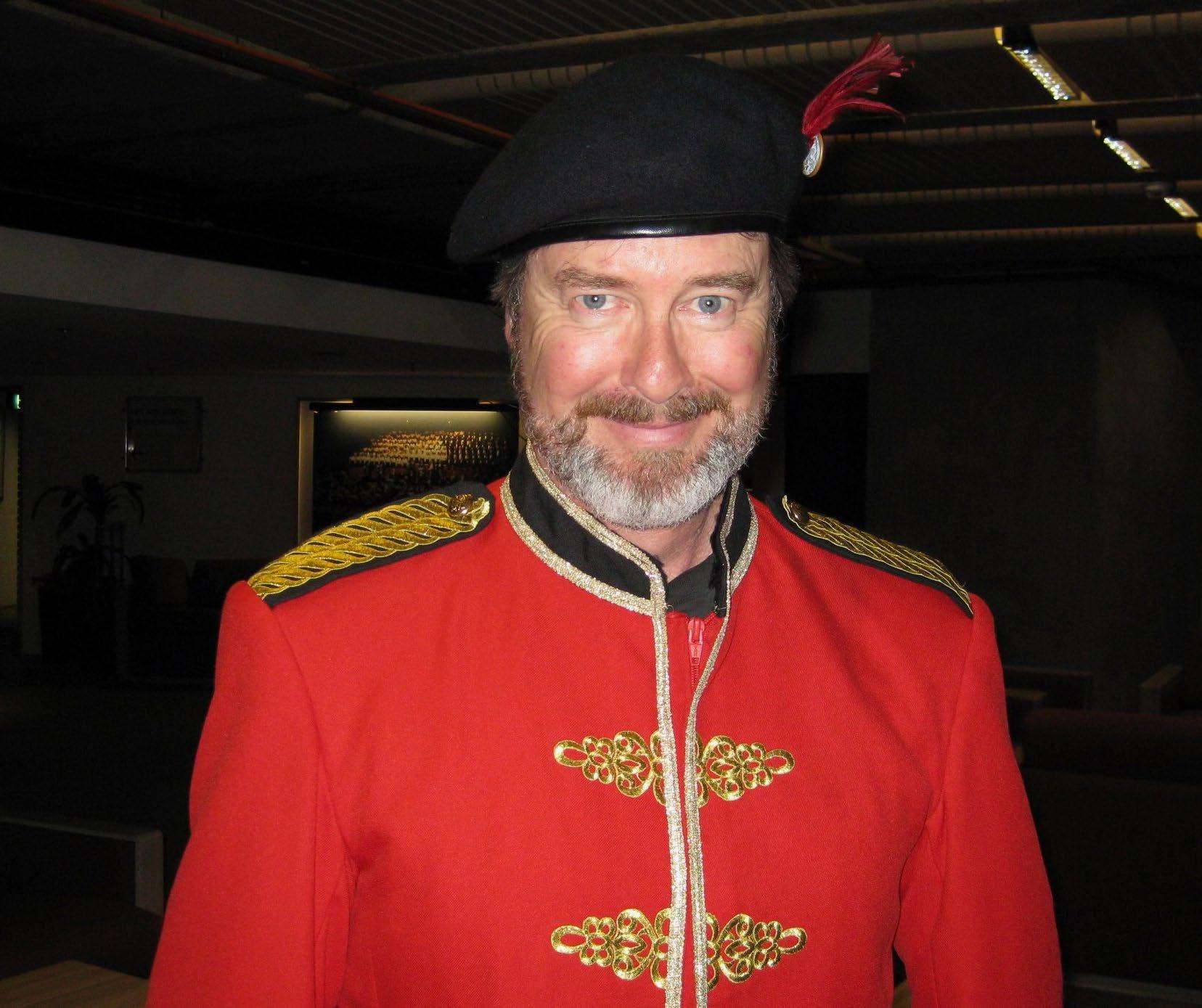
David Clarence, Principal Timpani, OAO and Rachel Westwood, former Tutti Violin, OAO
In October 2022, Australia lost one of its finest musical sons in Mark Fitzpatrick, Associate Principal 2nd Violin of the Opera Australia Orchestra from 1981-2022.
Born into a working-class family with no background in music, at age seven, Mark decided he would become a violinist and
(characteristically) arranged for his own lessons. He went on to attend the Sydney Conservatorium, studying violin with John Harding, Mascott Blake, Alice Waten and conducting with Chris Nicholls. In 1974 as a member of the ABC’s National Training Orchestra he took his first steps in industrial advocacy when negotiations to improve
working conditions took place. His interest and ability in this field would become a hallmark, where his razor-sharp intelligence and insight allied to a born diplomat’s suavity and tact would not only serve Mark well, but all those fortunate enough to be on his side of the argument.
Mark was active as a freelance musician throughout the mid to late 1970s, including stints with the SSO and just about every visiting artist/company performing at that time.
From 1978-1980 he was a member of the Australian Chamber Orchestra before commencing his career in 1981 with the “orchestra of many names”. Known at the time as the Australian Elizabethan Theatre Trust Sydney Orchestra then the Elizabethan Philharmonic then the Australian Opera & Ballet Orchestra and currently the OAO, Mark’s time with the orchestra saw momentous and sometimes tumultuous changes.
Throughout these decades, Mark distinguished himself as a first-rate leader of his section, consistently delivering performances of the highest quality in all repertoires. Being a ‘stringy’ guy, Mark had a special brief to look after his colleagues in the trenches, the tutti strings. In the opera house where long, arduous scores are the norm, the tutti players bear the brunt of the workload. Keenly aware that any orchestra’s quality is defined by the strength and depth of its string sections, Mark’s advocacy of their needs was always front and centre of his mind.
Mark was one of the most loved and respected members of the orchestra. To fellow violinists, he is remembered as ‘kind’, ‘strong’, ‘fair’, ‘reliable’ and ‘dependable’. To the rest of us, words such as ‘pillar of strength’, ‘wise counsel’, ‘professionalism’ and ‘mentorship’ spring to mind.
At a more personal level, Mark was smooth of skin and clear of eye, with lush 80s hair and in later years, a most dapper beard. His sartorial elegance set a standard rarely matched, as did his excellent taste in wine and single-malt whisky. In the days when the green room bar at the opera house was still functioning, Mark was a regular and enthusiastic partaker in post-mortem sessions after performances. Mark held court very comfortably, glass of red in hand, conversing with colleagues, concertmasters, conductors and close friends. His deep knowledge of all things musical would silence any whiff of the dilettante.
He was not afraid to expound his opinions on how an orchestra – his orchestra – ought to operate, demolishing one proposal that the entire orchestral cohort be re-auditioned every year to stave off complacency: “That just is not the way to treat your colleagues – if you want to eat and drink with these people and share a joke at interval, you simply do not do that.”
Mark had a strong moral compass for workplace behaviour, social justice and was more than tinged with a socialist bent. He was descended on his father’s side from some of the founders of the Australian Communist Party, which may go partway to explaining his later passion for industrial relations, just one of his lasting and notable contributions to Australia’s orchestral scene.
Mark’s stellar work on the industrial front was a vital and much appreciated aspect in our world. Serving on countless panels and committees, Mark handled numerous industrial negotiations with his customary aplomb, gentleness and respect. Not a saint, although remarkably practised in patience, if Mark snapped it was for good reason as fools were not suffered. Anyone so inclined would feel the rapier-like thrust of his extensive vocabulary and considerable argumentative powers.
Perhaps most significantly, Mark demonstrated that in what (at times) can be a symphonycentric music culture, the pursuit of excellence in the relative anonymity of an orchestra pit is as demanding and noble a craft as any.
The challenges of working in the opera\ballet pit are unique and can be quite particular. Poor lighting, uncomfortable seating, narrow sightlines, an ungrateful acoustic – conductors, singers and dancers at the precipice of their abilities... throughout the list of potential and actual disasters, Mark was always sure-footed; a beacon of calm when things had turned into a washing machine.
Somehow along the years Mark also renovated an enormous Victorian house
restoring it from divided flats back into a family home. In that house, Mark, alongside his wife Sara, patiently reared their two daughters Ella and Scarlett, gave refuge to asylum seekers while they awaited processing and took Hugo the dog on walks around the neighbourhood.
An avid reader, erudite conversationalist, polymath and dashing raconteur, Mark was a Renaissance Gentleman. He was not sentimental and nor should we be in remembering him, for the best that he was. All who had the privilege of working alongside Mark have been blessed by their knowing of him.
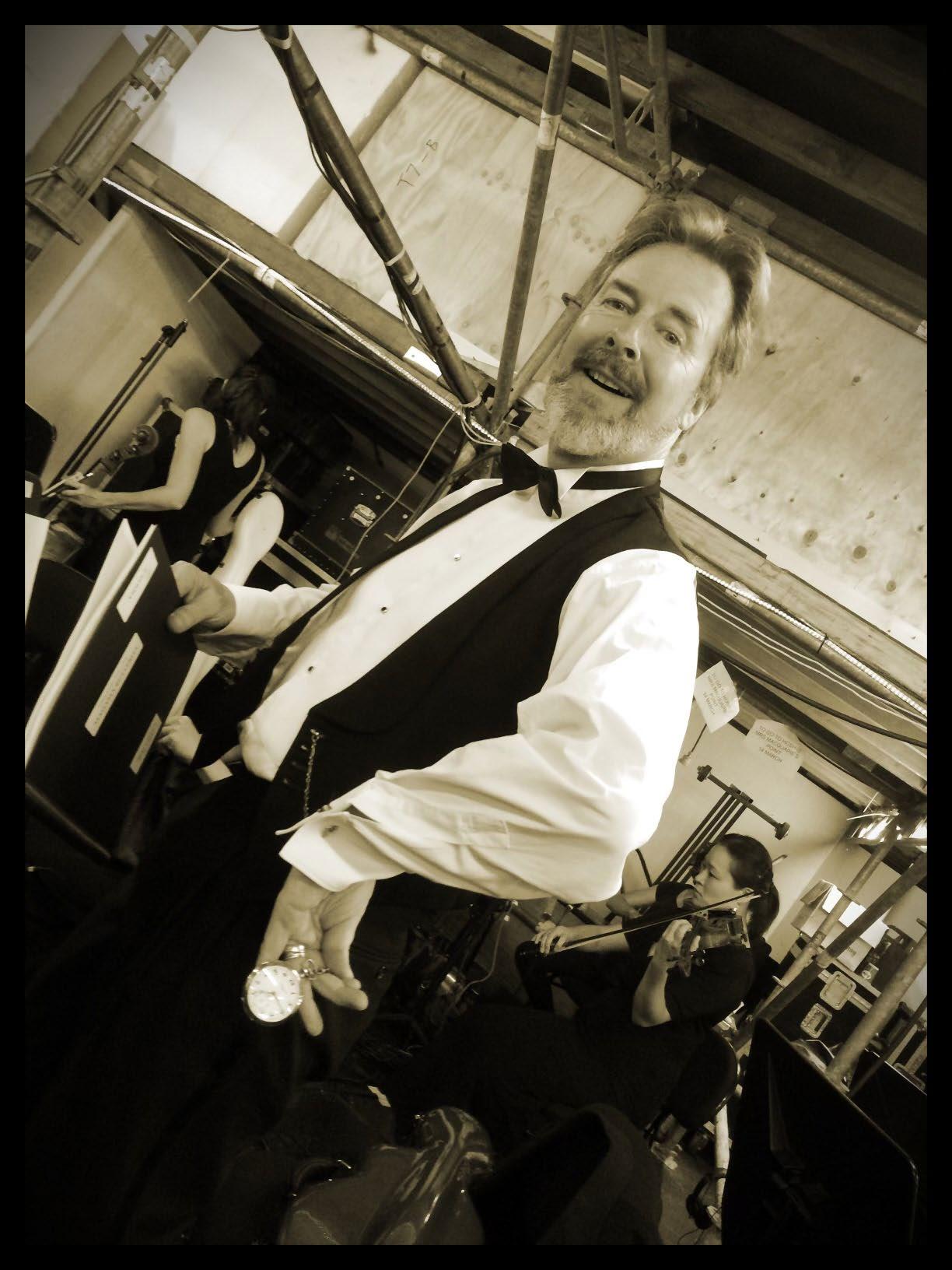

I am an Australian citizen/resident Yes No
I was previously a member of MEAA Yes No
Employment status Permanent Casual / Freelance Employer/ Orchestra
What is your role?
Do you work in any other MEAA workplaces? Yes No
If yes, where
METHOD - PLEASE INDICATE EITHER OPTION ONE OR TWO
OPTION ONE - PAYROLL DEDuCTION
For permanent musicians and also suitable for casual/freelance musicians who wish to have their fees deducted in the weeks that they work for the nominated orchestra where payroll deduction is available.
I hereby authorise the pay officer to make deductions from my pay for MEAA membership fees for the weeks that I work and in accordance with the appropriate scale as advised to the pay office by the MEAA each year.
OPTION TWO - DIRECT DEBIT For credit card/debit card deductions
I instruct MEAA to deduct my membership fees (tick one): Weekly Fortnightly 4-Weekly Quarterly Half-Yearly Annually
Credit card Mastercard Visa
Direct debit from my bank account
I hereby apply to join the Media, Entertainment & Arts Alliance as a new SOMA member and agree to be bound by its rules and constitution as amended from time to time. I request to pay my MEAA fees by payroll deduction / periodic credit card payment / periodic direct debit from my bank account until such time that I cancel my membership in writing.
SIGNED Date
Obligations of Membership
Membership fees are levied annually by Federal Council in consultation with SOMA. All membership fees are tax deductible. Fines and Levies shall be the first charge of all payments by members. If you leave the industry and wish to resign your membership, at least two weeks written notice of resignation must be given to your Regional Director. An unfinancial member, in addition to being liable for all amounts outstanding to the union, shall not be entitled to any of the benefits of membership including voting rights Web: www.meaa.org | Email: mail@meaa.org | Phone: MEAA Member Central: 1300 656 512